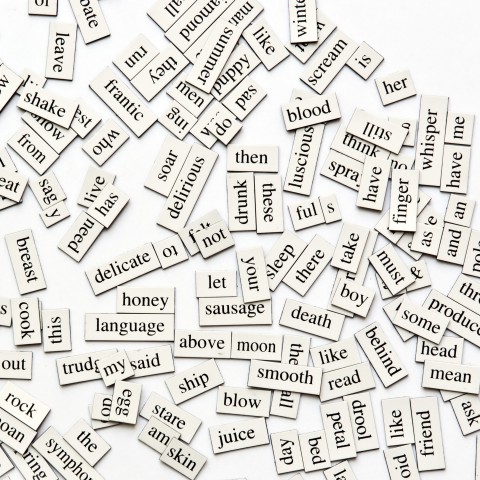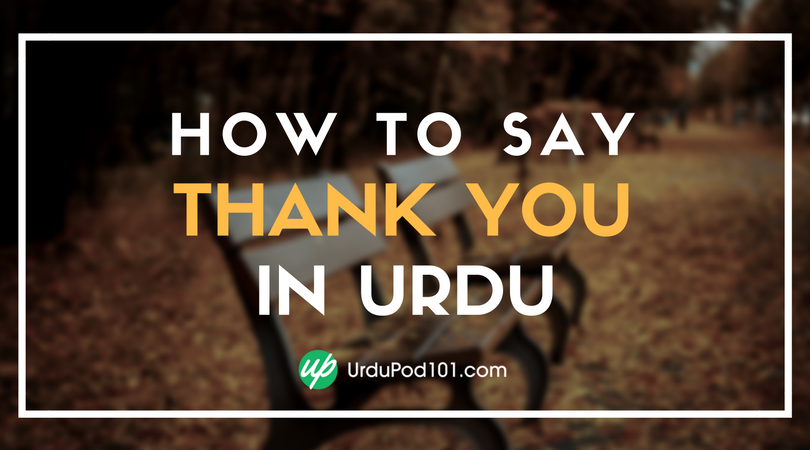
Can you imagine a car driving over long distances without having all of its crucial components in place? Of course not! In a similar way, you can never expect to master a language unless and until you achieve excellence in all major aspects of that language.
Like in all other languages, it’s necessitous to learn about Urdu sentence structure and the word order in Urdu grammar, because it will help you construct and comprehend Urdu sentences. While this may sound like a naïve matter, its significance can’t be undermined. This is the starting point for building simple Urdu sentences, and the topic culminates, over time, in the formulation of complex Urdu sentences.
In this article, we’ll elaborate on everything you need to learn about word order in the Urdu language. Whether you’re a new Urdu learner, or you’ve been learning Urdu for quite a while, you’ll likely find something useful here to enhance your language skills.
Let’s begin.
 Table of Contents
Table of Contents
- The Basic Sentence Structure in Urdu
- Basic Word Order in Urdu Sentences
- Building Complex Sentences in Urdu
- Forming Questions in Urdu
- Making Negative Sentences
- Practice Session
- Conclusion
1. The Basic Sentence Structure in Urdu

Unlike most languages, such as English, Urdu does not follow the SVO (Subject + Verb + Object) order in the construction of sentences. Instead, Urdu word order follows the SOV (Subject + Object + Verb) sequence. Below is an explanation of Urdu syntactic formation.
1- SOV
Subject + Object + Verb is the standard syntactic word order in the Urdu language. To illustrate this fact, let’s discuss the sentence below.
وہ فٹبال کھیلتا ہے۔
V O S
As Urdu is written from right to left, you’ll read it likewise to identify the SOV formation. For additional clarity, we’ve included the transliteration of the same sentence, along with the proper word-place tagging.
woh football khelta hai.
S O V
“He plays football.”
S V O
2- The Subject (فاعل کی اہمیت)
فاعل (fael) is the exact translation of “subject” in Urdu. If you intend to become a proficient Urdu learner and speaker, remember to never omit the subject from sentences. Always using the subject will keep the matter clear, thus helping you and your interlocutor avoid miscommunication.
Have a look at the following sentences:
- وہ کار چلاتا ہے۔
woh car chalata hai.
“He drives the car.”
- کار چلاتا ہے۔
car chalata hai.
“Drives the car.”
The former sentence has a subject, which is وہ (woh), and creates a complete sentence. On the other hand, the deletion of the subject in the second sentence makes the situation unclear. It also reduces the sentence to the status of a phrase, for it doesn’t convey a complete thought.
2. Basic Word Order in Urdu Sentences

Having discussed the basic syntactic features of an Urdu sentence, let’s take a closer look at each of the components within a sentence.
1- SOV (فاعل، مفعول، فعل)
فاعل (fael), فعل (fail), and مفعول (mafool) are the most appropriate words in Urdu for “subject,” “verb,” and “object,” respectively. فاعل – مفعول – فعل (Subject + Object + Verb), as discussed earlier, is the most desirable word order in Urdu sentences.
2- Subject-Verb Agreement in the Urdu Language

فعل (fail), or the “verb,” is another important component of an Urdu sentence. Urdu verbs are always preceded by the subject and object in grammatically correct sentences. Like English sentences, the subject in Urdu will determine the form of the verb. Let’s compare English and Urdu sentences in terms of their word order with the help of the following example.
“He reads a book.”
S V O
If we want to translate this sentence into Urdu, we’ll have to change the word order to SOV. The Urdu version of this sentence will be:
وہ ایک کتاب پڑھتا ہے۔
woh aik kitaab parhta hai.
S O V
3- Urdu Verb Conjugation
As a curious Urdu learner, you surely want to know more about verb conjugation, which allows you to properly use verbs in any situation. The most important thing to remember is that Urdu verbs conjugate according to the person, number, gender, and so on of the subject.
If you want to learn more about conjugation, UrduPod101 has prepared a detailed article regarding Urdu verb conjugation. The article will answer all of your questions about conjugation in Urdu, and provide you with appropriate examples.
3. Building Complex Sentences in Urdu

So far, we’ve learned how to properly arrange the basic components of an Urdu sentence. Now, it’s time to proceed further and add more linguistic features to the sentence.
1- Placing Pronouns in Urdu Sentences
Pronouns are useful elements in the formation of Urdu sentences. But because the gender of Urdu pronouns causes verbs to conjugate, you’ll have to be careful when using them.
When dealing with subject pronouns, note that they don’t change their position in the sentence:
- وہ سکول جاتا ہے۔
woh school jata hai.
“He goes to school.”
- ہم سکول جاتے ہیں۔
hum school jatay hain.
“We go to school.”
Come what may, the word order in Urdu will always remain the same in sentences. That is to say, no matter what kind of pronouns you’re using, the Urdu word order will not change.
For deeper insight into Urdu pronouns, you can visit our comprehensive guide to Urdu pronouns.
2- Placing Adjectives in Urdu Sentences
Adjectives can make a sentence pithy and charming by modifying the nouns in that sentence. Let’s learn how and where to place them in Urdu sentences.
Adjectives are always placed before nouns in Urdu sentences.
- میٹھا آم
meetha aam
“Sweet mango”
- کڑوی گولی
karwi goli
“Bitter pill”
- وہ ایک نیلی شرٹ پہنتا ہے۔
woh aik neeli shirt pehanta hai.
“He wears a blue shirt.”
To learn more about the placement of adjectives in Urdu sentences, go through our guide to using Urdu adjectives at UrduPod101.com.
3- Placing Adverbs in Urdu Sentences
In the Urdu language, adverbs modify the meaning of verbs, adjectives, or other adverbs, and impart clarity to a sentence. Let’s discuss these cases one by one.
- میں اچھا کام کرتا ہوں۔
mein acha kaam karta hun.
“I work well.”
- میں بہت اچھا کام کرتا ہوں۔
mein bohat acha kaam karta hun.
“I work very well.”
- وہ بہت میٹھا آم کھاتا ہے۔
woh bohat meetha aam khata hai.
“He eats very sweet mango.”
In the first sentence, اچھا (acha) modifies the verb. In the second, بہت (bohat) modifies another adverb. In the third, بہت (bohat) modifies an adjective. You must have noticed that in each sentence, the adverbs are always placed before the verb, adjective, or adverb.
If you still want to dig deeper into adverbs in the Urdu language, our article on Urdu adverbs is a must-read.
4- Placing Prepositions in Urdu Sentences
Urdu prepositions tend to express a relationship between a noun or pronoun and another feature of a sentence. Generally, the prepositions answer questions like “When?” “Where?” and “How?” Let’s consider a few examples:
- وہ شام کے بعد گھر جاتا ہے۔
woh shaam kay baad ghar jata hai.
“He goes home after evening.”
- گائے کھیت میں چر رہی ہے۔
gaye khet mein char rahi hai.
“The cow is grazing in the field.”
- وہ گھر ٹیکسی سے جاتا ہے۔
woh ghar taxi say jata hai.
“He goes home by taxi.”
- موٹا لڑکا باغ میں تیزی سے چل رہا تھا۔
Mota larrka bagh mei tezi say chal raha tha.
“The fat boy was briskly walking in the garden.”
- وہ امتحان میں بے احتیاطی سے لکھتی جارہی تھی۔
Woh imtehan mei be ihtiati say likhti jaa rahi thi.
“She was writing carelessly in the examination.”
In the sentences above, the Urdu prepositions کے بعد (ky baad), میں (mei), and سے (say) are placed between the object and the verb. This is how you use prepositions in terms of Urdu word order.
4. Forming Questions in Urdu

کیا (kia), کیوں (kiun), کب (kab), کہاں (kahan), and کیسے (kaisay) are the usual words to start questions in the Urdu language. In the English language, they can be translated as “what,” “why,” “when,” “where,” and “how,” respectively.
The Urdu word order remains the same when these words are introduced to a sentence. However, the question word will usually appear either at the beginning of the sentence or after the subject.
Here are some examples:
- کیا وہ سکول جاتاہے؟
kia woh school jata hai?
“Does he go to school?”
- وہ سکول کیوں جاتا ہے؟
woh school kiun jata hai?
“Why does he go to school?”
- وہ کب سکول جاتا ہے؟
woh kab school jata hai?
“When does he go to school?”
- وہ کہاں سکول جاتا ہے؟
woh kahan school jata hai?
“Where does he go to school?”
- وہ کیسے سکول جاتا ہے؟
woh kaisay school jata hai?
“How does he go to school?”
5. Making Negative Sentences

Negative sentences are a large part of speech and conversation in daily life, so we’re going to cover how to form this type of sentence in Urdu. Words of negation are often placed between the object and the verb, while the rest of the syntactic formation remains the same. نہیں (nahi) and نہ (nah) are the main words of negation in the Urdu language.
Let’s see how these words affect sentence formation and the Urdu word order:
- وہ سکول نہیں جاتا ہے۔
woh school nahi jata hai.
“He does not go to school.”
- وہ سکول نہیں گیا۔
woh school nahi gaya.
“He did not go to school.”
- وہ سکول نہیں جائے گا۔
woh school nahi jaye ga.
“He will not go to school.”
In all three sentences, you can see that the word نہیں (nahi) has been added between the object and the verb to highlight the negation.
Now let’s have a look at some sentences in which the word نہ (nah) is used:
- تم سکول نہ جاؤ۔
tum school nah jao.
“Do not go to school.”
- تم پانی نہ لاؤ۔
tum pani nah lao.
“Do not bring water.”
While translating these two sentences into English, the subjects of both sentences have been omitted. Nonetheless, as discussed earlier, we don’t recommend omitting the subject in Urdu sentences; they must always be used in their proper places.
6. Practice Session

Now it’s time to be reminiscent of your childhood school memories, for you’re about to enter a practice session. You’ll be asked to rearrange some jumbled words to make a proper meaningful sentence. (Don’t worry, we won’t be grading you on this!)
Here are the sentences you need to unscramble:
- کھانا وہ کھاتا ہے نہیں
khana woh khata hai nahi
- تم جاتے ہو ہوٹل کیسے
tum jatay ho hotel kaisay
- پارک گئے میں ہم
park gaye mei hum
- ہو جانتے تم مجھے
ho jantay tum mujhay
- دوبارہ کیا گے ہم ملیں
dobara kia gay hum milain
Do you need some extra vocabulary to help? UrduPod101 has you covered with our vocabulary list section and dictionary!
1- Key to the Test
- وہ کھانا نہیں کھاتا ہے۔
woh khana nahi khata hai.
“He does not eat food.”
- تم ہوٹل کیسے جاتے ہو؟
tum hotel kaisay jatay ho?
“How do you go to the hotel?”
- ہم پارک میں گئے۔
hum park mei gaye.
“We went to the park.”
- تم مجھے جانتے ہو۔
tum mujhay jantay ho.
“You know me.”
- کیا ہم دوبارہ ملیں گے۔
kia hum dobara milain gay.
“Will we meet again?”
7. Conclusion
In this article, you’ve learned the art of Urdu sentence building by keeping the basic structure of Urdu sentences in its accurate form. This lesson has helped you in understanding sentence structure in Urdu as it relates to various parts of speech.
Did we skip anything that you wanted to learn about word order in Urdu? Let us know in the comments section, and we’ll do our best to answer your questions!
Don’t forget to visit and explore UrduPod101.com. Our website is a repository of plentiful resources about the Urdu language. We always look forward to helping you on your language-learning journey.
Very Happy Urdu Learning!










